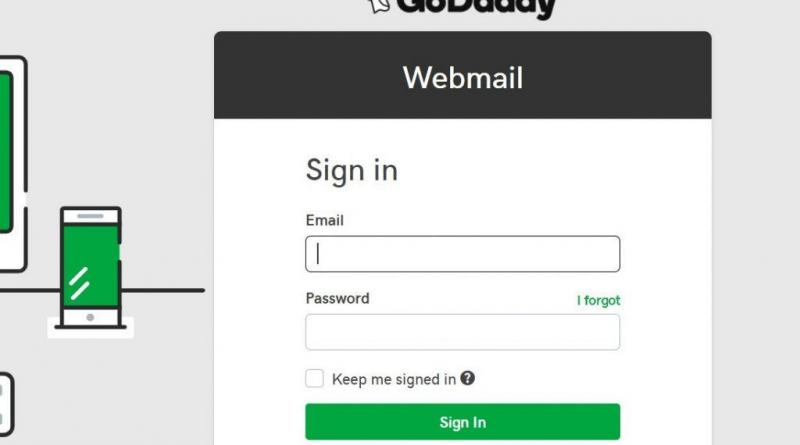GoDaddy, one of the most popular web hosting and domain registration service providers, offers a range of email services for individuals and businesses. Whether you’re running a small business or a large corporation, having a professional email address with your domain name is crucial for building brand credibility and staying connected with your customers.
If you’re looking to access your GoDaddy email account in English language, you’ve come to the right place. In this blog post, we’ll walk you through the step-by-step process of GoDaddy email login in English language and share some useful tips for managing your inbox efficiently.
1. Introduction to GoDaddy Email Login
GoDaddy is a well-known and reliable domain registrar and hosting provider. One of its key services is email hosting for individuals and businesses alike. To access your GoDaddy email, you need to log in using your GoDaddy username and password. This may seem like a simple task, but with different sign-in methods available, it can be confusing for some users.
In this blog, we will discuss how to create a GoDaddy account, logging in to your email account, using third-party accounts to log in, verifying your email account, setting up billing information, accessing DNS settings, transferring domains to GoDaddy, managing email records in DNS, and troubleshooting GoDaddy email login issues. With this comprehensive guide, you’ll be able to navigate through GoDaddy email login and manage your emails with ease.
2. Creating a GoDaddy Account
To access GoDaddy email services, follow these steps:
1. Create a GoDaddy account by providing your email address and creating a secure password.
2. GoDaddy will send a verification email to the email address you provided.
3. Verify your email address by clicking the link in the verification email.
4. Log in to your GoDaddy account.
5. Choose the account type that best fits your needs, such as personal, business, or developer accounts.
6. Once your account is created, you can access features such as DNS settings and email records management, which are useful for managing your domain and email services.
7. GoDaddy offers an easy and straightforward account creation process to help you get started with their services.
3. Logging in to Your GoDaddy Email Account
To log in to a GoDaddy email account, users should go to the GoDaddy email login page and enter their email address and password.
1. It’s recommended that users bookmark the login page for easier access in the future.
2. If users forget their password, they can retrieve it by clicking “Password I forgot” and following the prompts.
3. Users can choose to stay signed in on their device or sign out after each session to keep their information secure.
4. If users have trouble logging in, they should ensure they are using the correct username and password.
5. GoDaddy also offers various third-party login options for added convenience.
6. By following these steps, users can easily access their GoDaddy email account and manage their emails.
4. Using Third-party Accounts to Log In
In addition to logging in with a GoDaddy account, users can also use their third-party accounts such as Google, Facebook, and Microsoft to access their email. To do this, simply click on the corresponding icon on the GoDaddy login page and enter the necessary credentials.
This streamlines the login process and eliminates the need to remember yet another username and password. However, users should note that using a third-party account may require additional verification steps to ensure the security of the email account. As with any login method, it’s always a good practice to regularly update and secure passwords for all linked accounts.
5. Verifying Your GoDaddy Email Account
To ensure the security and safety of your GoDaddy email account, it is important to verify your account. You can easily verify your GoDaddy email account by logging in to your dashboard and following the simple steps for email verification. This process helps GoDaddy to authenticate your identity and prevents unauthorized access to your account. In addition to email verification, you can also add an extra layer of security by setting up 2-step verification using the Authenticator app or SMS verification backup method.
Once your GoDaddy email account is verified, you can confidently send and receive emails with peace of mind. Verification is just one step in the process of using GoDaddy email, and our earlier blog sections have covered other important aspects such as creating a GoDaddy account, accessing DNS settings, transferring domains, and troubleshooting login issues.
6. Setting up Billing Information
Before accessing your GoDaddy email account, it’s important to set up your billing information. This can easily be done by logging in to your account and navigating to the billing section. Once there, you’ll be able to add your payment method and choose your preferred plan. It’s important to note that GoDaddy offers different email plans based on your business needs, so take some time to choose the right one for you.
With your billing information in place, you can rest assured that your account will remain active and you’ll have uninterrupted access to your email. If you encounter any issues with your billing information, GoDaddy’s customer support team is available to help troubleshoot and resolve any problems.
Also Read: What is NORSTRAT
7. Accessing DNS Settings
In order to properly manage your domain’s DNS records, it is important to access the DNS settings through your GoDaddy account. As discussed earlier in this blog, creating a GoDaddy account is a crucial step for managing your email and domain settings.
Once you have logged in to your account, accessing the DNS settings can be done easily by finding the domain you wish to manage and clicking on the settings page. This will allow you to input important information such as email records and website hosting information. By having control over these settings, you can ensure that your domain name and corresponding email address are functioning properly.
As with any online account, it is important to keep your username and password secure to prevent unauthorized access. With the steps listed in this blog and the help of GoDaddy’s customer support team, managing your DNS settings and keeping your domain running smoothly can be an easy and stress-free process.
8. Transferring Domains to GoDaddy
When it comes to managing domains, GoDaddy is one of the most popular hosting companies on the market. In the previous sections, we have discussed the basics of creating a GoDaddy account, logging in to your email, setting up billing information, accessing DNS settings, and troubleshooting login issues. Now, in this section, we will discuss how you can transfer your domain to GoDaddy.
Transferring your domain to GoDaddy is a straightforward process, and it can be done in a few simple steps. First, you need to make sure that the domain is eligible for transfer, meaning that it is not in a locked or pending status. Then, you need to obtain the authorization code from your current registry, which is needed to initiate the transfer process.
Once you have the code, you can start the transfer process within your GoDaddy account by clicking on the “Transfer Domains” option. Enter the domain name and authorization code, and follow the prompts to complete the transfer.
By transferring your domain to GoDaddy, you’ll be able to manage all of your domains in one place, which can make things much more convenient for you. Plus, GoDaddy offers a range of features and tools to help you enhance your online presence and protect your domain from threats.
With that said, if you’re looking to transfer your domain to GoDaddy email account, it’s important to weigh the costs associated with doing so. Make sure you understand the fees and potential risks before making any decisions.
9. Managing Email Records in DNS
Once you have set up your GoDaddy email account, it is important to manage your email records in DNS properly. This can be done by logging in to your GoDaddy account and accessing your DNS settings. From there, you can add, edit and delete email records as needed. It is important to ensure that your DNS records are set up correctly to avoid any email delivery issues.
If you’re having trouble managing your email records or need assistance with making any changes, GoDaddy’s customer support team is available to help. By effectively managing your email records, you can ensure that your emails are delivered securely and promptly.
10. Troubleshooting GoDaddy Email Login Issues
The final section of this blog is dedicated to troubleshooting issues that may arise when logging in to your GoDaddy email account. Some common issues include forgotten passwords or incorrect login information. To address these problems, users can try clearing their browser’s cache and cookies, or contacting customer service for assistance in resetting login credentials.
In addition, users can set up third-party login options, such as Facebook or Google email, to simplify the login process. It is important to verify your account and set up billing information to avoid any login issues in the future. Finally, managing email records in DNS can also help with accessing your GoDaddy email account. With these tips and tricks, users can easily troubleshoot any issues and streamline their GoDaddy email login experience.







